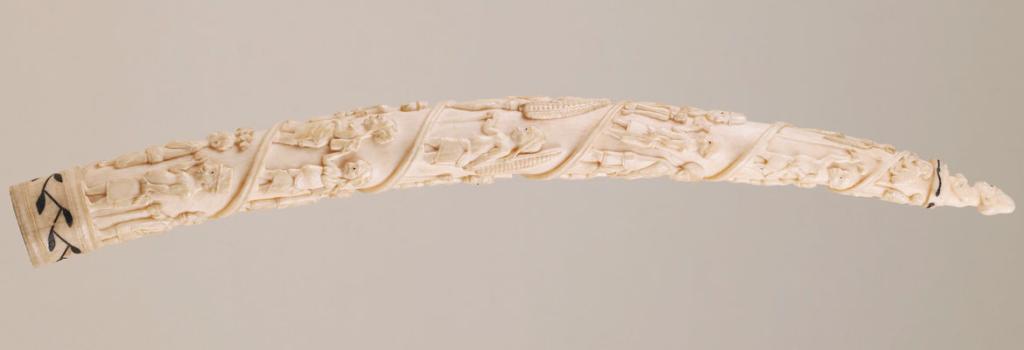
The Harrison Central African collection
A collection of pre-colonial artefacts from Gabon, Central Africa acquired by the Liverpool trader J.G.C. Harrison during the 1870s and early 1880s.
This is part of the Africa collection.
A collection of pre-colonial artefacts from Gabon, Central Africa acquired by the Liverpool trader J.G.C. Harrison during the 1870s and early 1880s.
J. G. C. Harrison was the agent of a Liverpool trading firm who ran a trading post on the Gabon coast near the port town of Sette Cama in pre-colonial times. Museum records indicate that Harrison claimed to have been made ‘King of Kaputa’ by the Vili authorities at Sette Cama. He seems to have been politically and socially integrated into African society and he would have used some of the artefacts he donated to the museum in his daily life. These artefacts appear to reflect Harrison’s political status in African society and his personal relationships.
The staff he donated in 1883 (accession number: 1.11.83.1, now lost) was given to him as his ‘official insignia of office’, while two of his status caps ‘from the Loango country’ (accession numbers: 1.11.83.3 & 1.11.83.9) are well used and whitened by salt deposits, suggesting that he wore them on a regular basis as befitted his status as ‘king of Kaputa’. A number of the items from Gabon that he donated in 1879 were prestige ornaments made and worn by women, including two Eshira beaded necklets (accession numbers: 8.7.79.2 & 8.7.79.3) and a beaded belt (accession number 8.7.79.4).
He also donated a ‘rattle used by the women in medicine making from Sette Cama’ in 1883 (11.10.83.12 now lost). These items, especially the ‘rattle’, could not easily have been acquired, except through a close personal relationship with their female owner, so it is possible that Harrison acquired them from his African wife.
Read more
Curator Zachary Kingdon explores J.G.C. Harrison’s donations in ‘Subtracting the Narrative: Trade, Collecting, and Forgetting in the Kongo Coast Friction Zone during the Late Nineteenth Century’ published in the journal Museum Worlds: Advances in Research, Vol. 3, 2015. Pp. 18-36.s.
